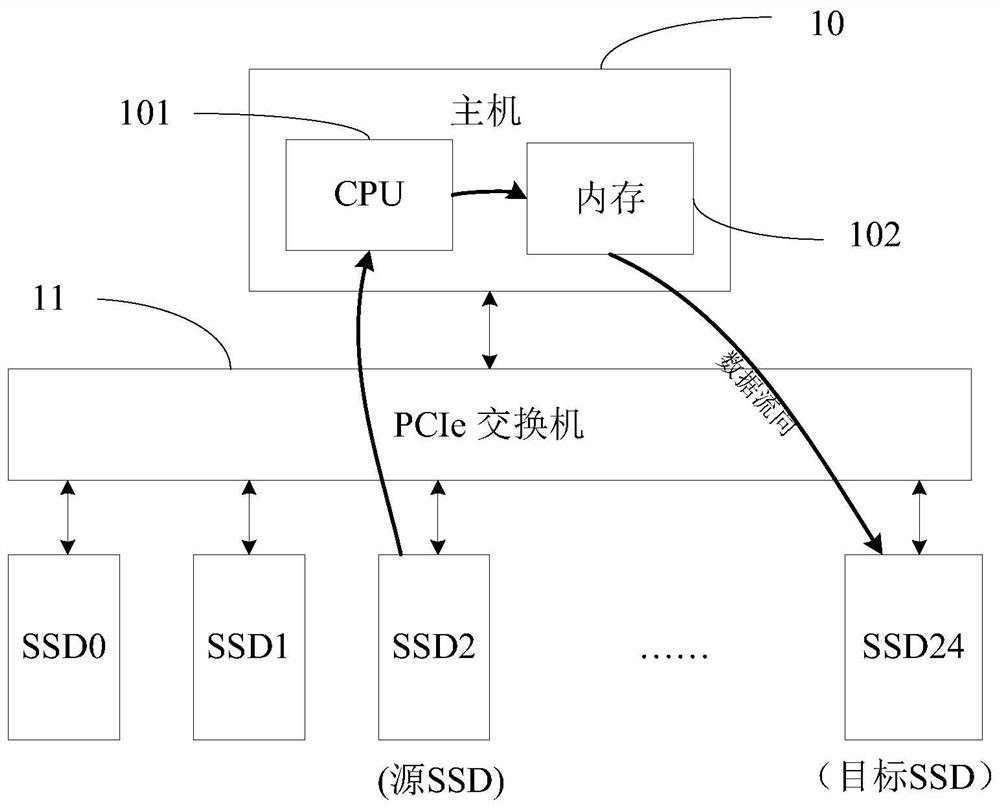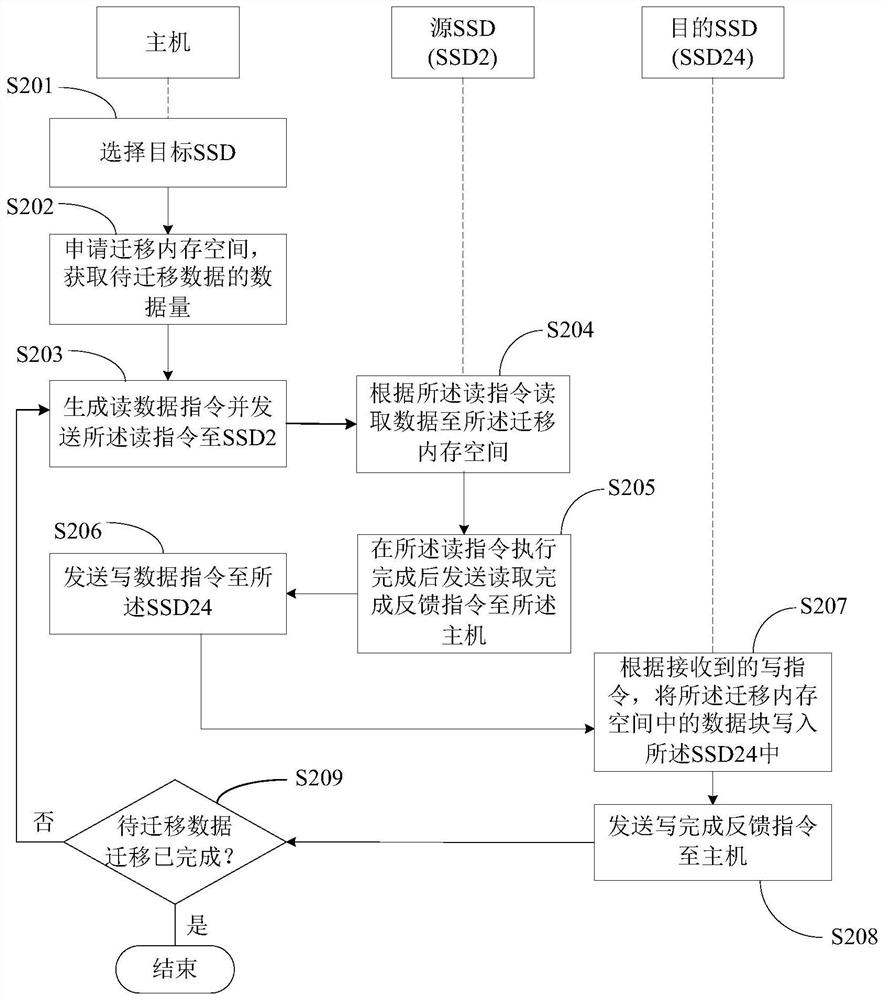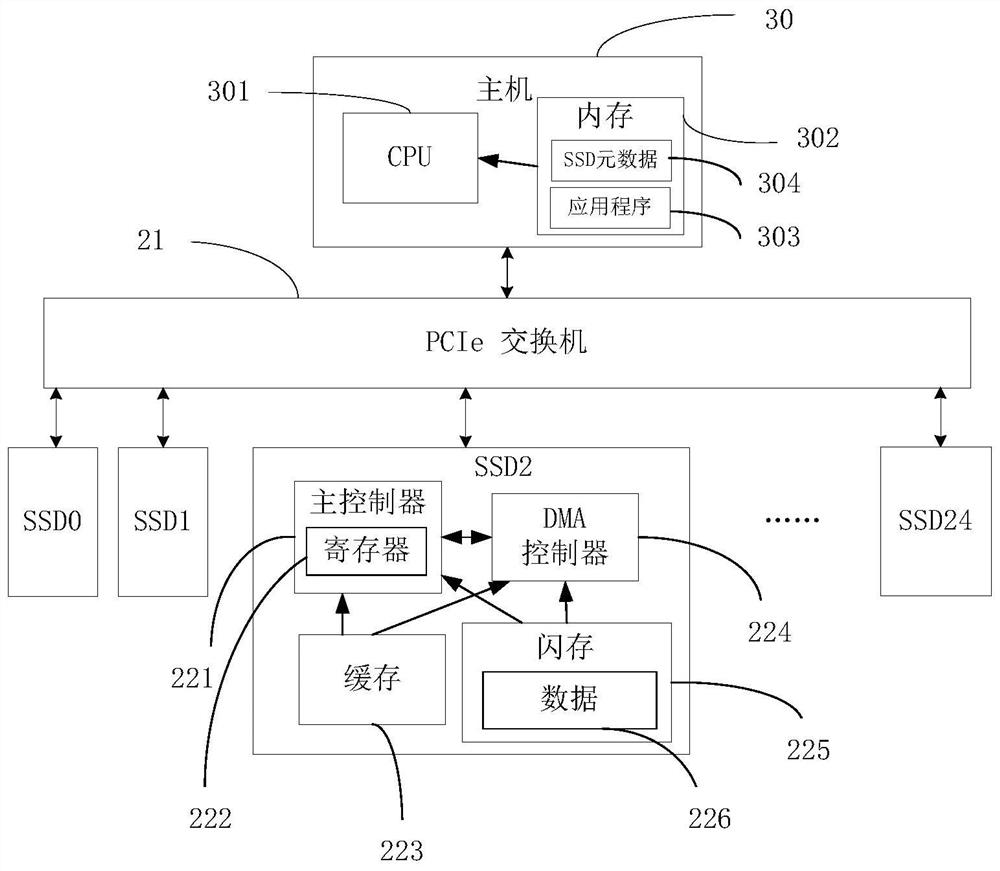Data migration method, host and solid-state storage device (SSD)
A host and data technology, applied in the storage field, can solve problems such as occupying the host, affecting the performance of the storage system, and affecting normal data access, so as to achieve the effect of guaranteeing speed and reducing performance impact
- Summary
- Abstract
- Description
- Claims
- Application Information
AI Technical Summary
Problems solved by technology
Method used
Image
Examples
no. 1 example
[0091] Such as image 3 Shown is a structural diagram of the storage system in the first embodiment of the present invention. The architecture diagram of the storage system in the first embodiment and figure 1 The architectures of the storage systems in the prior art are basically the same, including a host 30 , a PCIe switch 31 , and SSD0 to SSD24 , and the SSD1 to SSD24 are connected to each other through the PCIe switch 31 .
[0092] The host 30 includes a CPU 301 and a memory 302. The CPU 301 is used to run an application program 303 in the memory to implement some functions provided by the host 30, such as controlling data access and migration in SSD0-SSD24. The memory 302 also stores the metadata 304 of SSD0-SSD24, and the metadata 304 records the information of the data stored in each SSD, such as the data volume of the stored data, and the logical address information of the stored data Wait.
[0093] The structures of the SSD0-SSD24 are basically the same, and the s...
no. 2 example
[0135] The only difference between the second embodiment and the first embodiment is that in the second embodiment, the data to be migrated in the source SSD is first read to the local migration cache, and then the data in the local migration cache is written to the target SSD . The data migration method in the second embodiment will be described below with reference to a flow chart.
[0136] In the second embodiment, the architecture of the storage system is the same as image 3 Similarly, the SSD in the storage system will also provide a cache for the host and other SSDs to access, so in the following description, it will still use image 3 The architecture of the second embodiment is described. In addition, the method for the SSD to provide cache for the host and other SSDs to access is the same as that in the first embodiment. For details, please refer to Figure 4 description and will not be repeated here.
[0137] The following will combine Figure 6 A method for mi...
no. 3 example
[0161] The difference between the third embodiment and the first embodiment is that in the third embodiment, when the host SSD detects that data in the source SSD needs to be migrated, it only needs to send a migration command to the source SSD, and the source SSD The migration command can migrate the data to be migrated in its own flash memory to the target SSD. After the source SSD completes the migration of the data in its own cache, it can send a feedback command of the migration completion to the host. In this way, during the whole process of data migration, the host only needs to interact with the source SSD twice, and does not participate in the process of data migration, thereby further reducing the host bandwidth occupied by the data migration between SSDs. The data migration method in the third embodiment will be described below in conjunction with a flow chart.
[0162] In the third embodiment, the architecture of the storage system is the same as image 3 Similarl...
PUM
 Login to View More
Login to View More Abstract
Description
Claims
Application Information
 Login to View More
Login to View More - R&D
- Intellectual Property
- Life Sciences
- Materials
- Tech Scout
- Unparalleled Data Quality
- Higher Quality Content
- 60% Fewer Hallucinations
Browse by: Latest US Patents, China's latest patents, Technical Efficacy Thesaurus, Application Domain, Technology Topic, Popular Technical Reports.
© 2025 PatSnap. All rights reserved.Legal|Privacy policy|Modern Slavery Act Transparency Statement|Sitemap|About US| Contact US: help@patsnap.com



